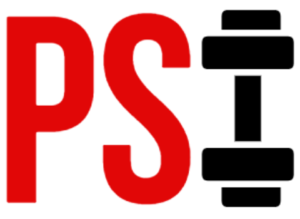For as long as bodybuilding has been a thing, we’ve had this debate:
How many meals per day do we have to eat to build muscle – two, six, twelve, one?
If you research the topic for a bit, you will come across countless recommendations, ranging from one single meal (commonly known as the OMAD diet) to as many as 10-12.
But, who is right and who is wrong? Do we have to eat a certain amount of meals every day to gain muscle?
Let’s take an in-depth look.
Do You Have to Eat Six Meals a Day to Gain Muscle?
No, you don’t have to eat six meals a day to gain muscle, but there could be merit to it. Having more meals can help us optimize our growth, or, at least, prevent ourselves from unintentionally slowing down our progress.
Say, for example, that you need to eat about 3,500 calories per day to be in a small surplus and gain about one percent body weight per month (1). If you eat only two meals per day, you would essentially have to eat upward of 1,700 calories on both meals. But, if you eat, say, four meals and two snacks, you can go like this:
Meal 1 – 700 calories (morning)
Snack 1 – 400 calories (brunch)
Meal 2 – 700 calories (lunch)
Snack 2 – 400 calories (pre-workout)
Meal 3 – 700 calories (post-workout)
Meal 4 – 600 calories (some time before bed)
As I’m sure you’ll agree, the second option seems much more sustainable, and you don’t have to stuff yourself silly to get your calories in.
So, to answer the initial question, no – you don’t have to eat six meals per day to gain muscle. But, doing so can be incredibly beneficial.

Do We Even Need A Caloric Surplus to Build Muscle?
I know what you might be thinking:
“Okay, so you’re basing your entire argument on the idea that we need to be in a caloric surplus to build muscle, and that only by having more meals, can we eat all of our day’s calories.”
No. Well, kind of but there are also other considerations which we’ll go over in the next point.
You see, the literature is largely in agreement that we need to be in some caloric surplus to build muscle optimally (1). So, the question isn’t so much, “Do we need a surplus for muscle growth?” But instead, “How big of a surplus do we need to gain optimally?”
And, it’s in our best interest to stick with a meal frequency that allows us to hit our daily calorie needs. For some people, that could be just a couple of meals; for others, that could mean six or more.
With that said, there is also an argument to be made about our protein dosing. It seems that having more frequent meals is better than eating a lot at once and then going for multiple hours without protein (2).
How Many Meals Should We Consume Per Day For Optimal Muscle Growth?
In the last several decades, we’ve had numerous studies examining the effects of meal frequency on nitrogen balance and overall lean mass gains.
For example, in one notable study, Brad Schoenfeld and Alan Aragon looked at how much protein we can use from a single meal for muscle growth (2). Their conclusion is as follows:
Based on the current evidence, we conclude that to maximize anabolism one should consume protein at a target intake of 0.4 g/kg/meal across a minimum of four meals in order to reach a minimum of 1.6 g/kg/day.
So, for example, if you weigh 80 kilos and your eating window is 14 hours long (say, from 7:30 am to 9:30 pm), you would have to consume at least four meals, each having about 32 grams of protein, for a total of 168 grams.
Okay, but the question is, must we have a minimum of four meals, or can we get by just fine with fewer?
The authors of the study suggest a minimum of four meals because of something known as the muscle-full effect (3). This is the body’s limited capacity to increase protein synthesis from a single meal. In numerous studies, as little as 20 grams of protein from a single meal was enough to maximize protein synthesis, and any excess amino acids are readily oxidized for energy.
The good news is, strength training seems to delay the onset of the muscle-full effect (4). It appears that the more muscle groups we train in a workout, the higher our threshold for muscle protein synthesis becomes. This, of course, seems logical because the more muscle damage we cause, the higher the incentive for the body is to raise protein synthesis and begin the recovery process.
But how big of an effect can we expect? Well, this is not entirely clear as factors like training intensity, effort, and total volume still matter. Plus, training large muscles like your quads is one thing; training small ones such as your biceps is a whole other.
We also need to consider the protein source. A substantial limitation of the current research is that they use whey protein within the experiments. Whey is a good protein source, but because it gets absorbed quickly, it doesn’t slow down muscle protein breakdown as well as other protein sources. In some studies, beef protein, for example, did a much better job of slowing down the breakdown and led to greater overall protein synthesis rates at higher doses (5).
So, What Does This All Mean?
By considering these two arguments, we can make a case for fewer meals. In other words, we can most definitely optimize the rates of muscle protein synthesis by having fewer meals that contain much more protein. We do, however, need to be mindful of these two things:
1) Your body’s ability to use protein will most likely be higher after a strenuous workout, after a long fast, and before going to bed (2, 4).
2) You should, ideally, get the majority of your protein from various whole foods and not just whey protein, which is the primary source of protein used in most studies (6).
So, with the right tactics, you can go about optimizing your protein synthesis rates with fewer than six meals – four, three, even two. What matters most is that you stick with a meal frequency that keeps your hunger at bay, fits your schedule, and is something you can sustain. It’s also a good idea to have protein-rich meals before and after training, as well as after long fasts (7).
Thank you for reading. If you liked this article, please share it and then………. go Pump Some Iron!
Follow me / Pump Some Iron on Instagram for updates @pump.some.iron


